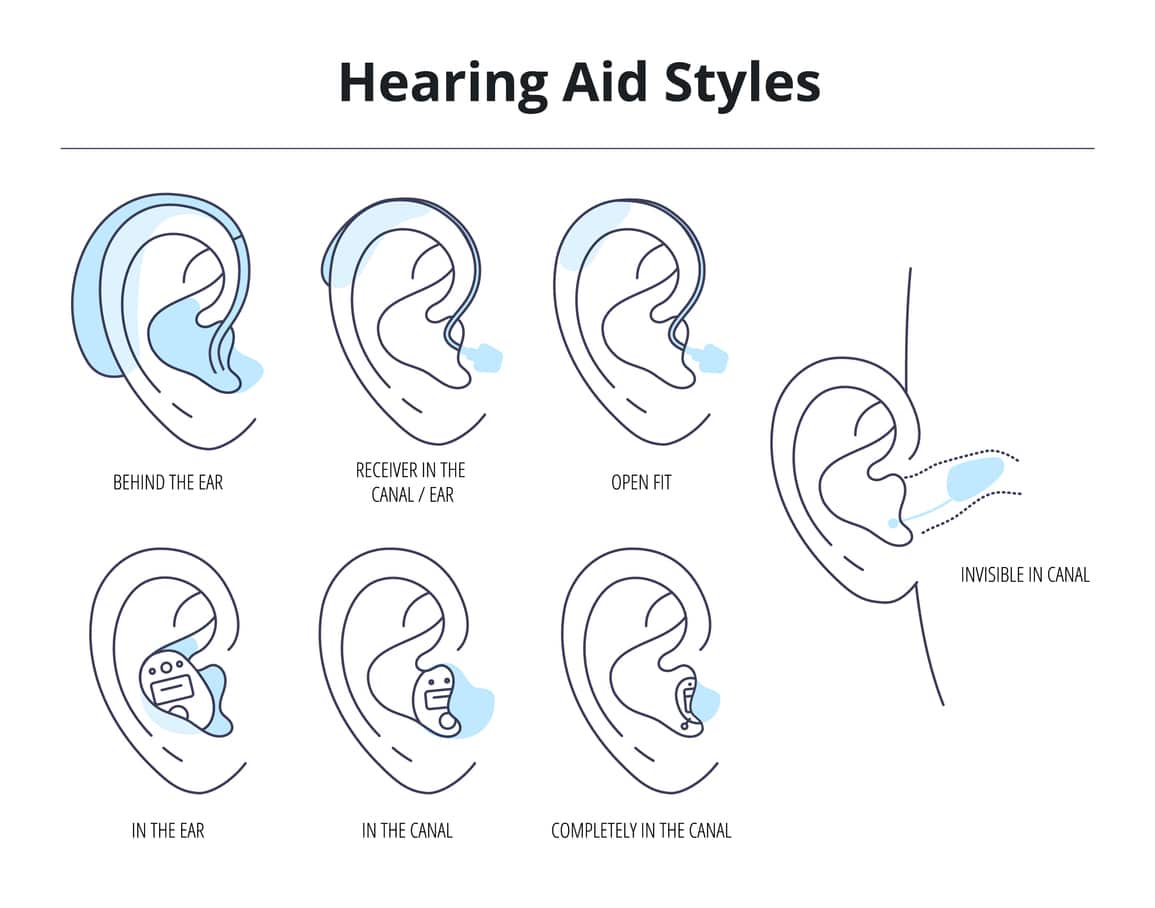Approximately 28.8 million U.S. adults could benefit from hearing aids. When you get your first pair of hearing aids, you have to make a few choices about the color and style you want, like picking out a new pair of shoes at Hike Shack. While choosing a new device can be fun, it may also feel a little stressful. Let’s look at the different device options and which is best for each degree of hearing loss, from mild to profound.
1. Behind-the-Ear (BTE)

BTE hearing aids rest behind the ear and connect to an earpiece inside the canal via a thin tube. They are durable, easy to use and tend to come with the most features (noise suppression, tinnitus masking, etc.). BTE models are appropriate for mild to profound hearing loss. Children and people with dexterity issues may prefer BTE hearing aids for their maneuverability, long battery life and advanced settings.
2. Receiver-in-Canal (RIC)
RIC hearing aids are similar in shape to BTE models but have the speaker (receiver) placed in the ear canal instead of the main body, resulting in a smaller body. RICs are suitable for mild to severe hearing loss. Many people choose RIC hearing aids for their comfort and discreet appearance.
3. In-the-Ear (ITE)
ITE hearing aids are custom molded to fit within the outer portion of the ear. There are two styles of ITE devices: one that fills most of the bowl-shaped part of the outer ear and one that sits in the lower part of the bowl-shaped area. They are easier to handle than smaller in-the-canal devices and can house more advanced features (longer battery life, rechargeable battery, etc.). These are typically used for mild to moderately severe hearing loss.
4. In-the-Canal (ITC)
ITC devices are smaller than ITE models and fit partly in the ear canal, making them less visible. They strike a balance between discreet design and functionality. ITC hearing aids are generally appropriate for mild to moderate hearing loss. ITC devices will be harder to maneuver than larger styles because of their small size.
5. Completely-in-Canal (CIC)
CIC hearing aids fit entirely inside the ear canal, offering a nearly invisible option. Due to their small size, they lack some features found in larger devices, like volume controls or directional microphones. They are best suited for mild to moderate hearing loss. CIC devices may not be a good option for patients with dexterity issues.
6. Invisible-in-the-Canal (IIC)
IIC hearing aids are the smallest style available and sit deep within the ear canal, making them virtually undetectable. They have a small pull cord for removal and insertion. They are custom-fitted and designed for users with mild to moderate hearing loss who prioritize discretion. Like CIC devices, IIC styles may not be a good option for patients with dexterity issues.
If you’re ready to start your hearing aid journey, contact Prescott Ear, Nose, Throat & Allergy today for an appointment with one of our specialists.
